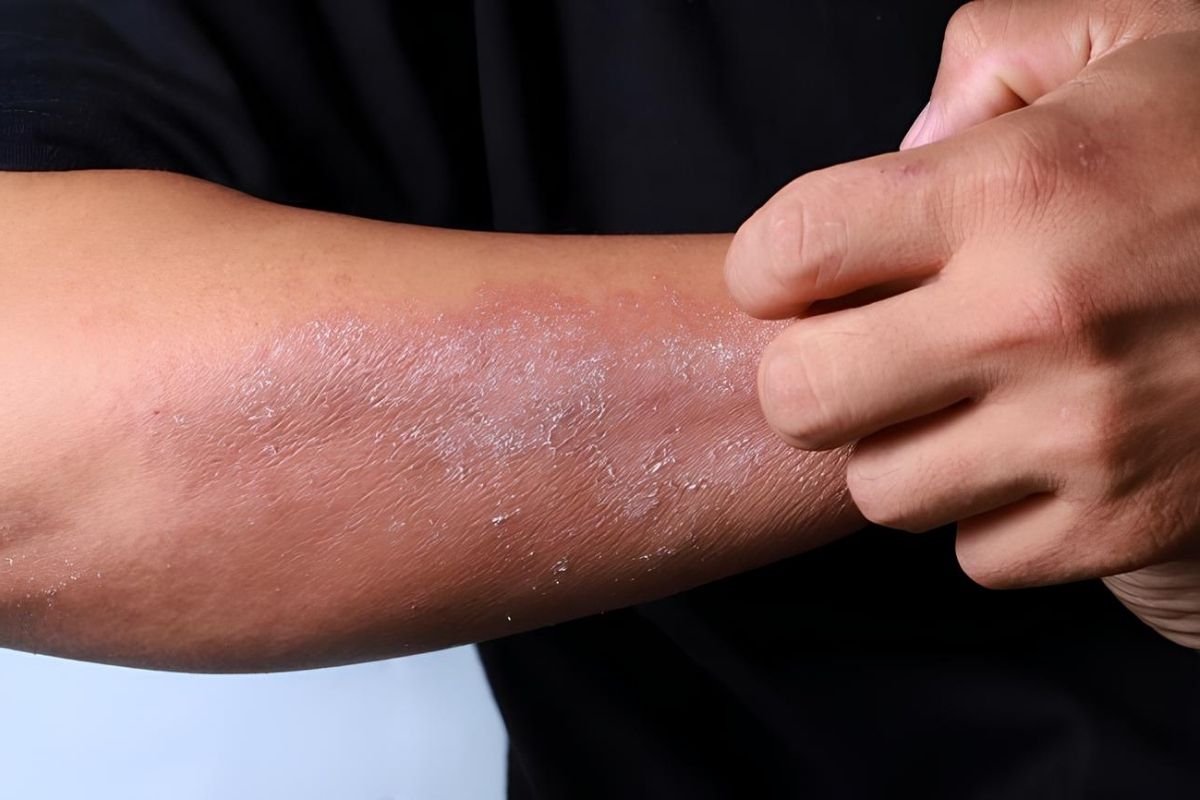
Pellagrophobia is the intense fear of developing pellagra, a disease caused by a deficiency of niacin (vitamin B3). This phobia might sound unusual, but it can significantly impact a person's life. Imagine constantly worrying about your diet, scrutinizing every meal for niacin content, and avoiding foods that might trigger anxiety. Pellagrophobia can lead to obsessive behaviors and even social isolation. Understanding this fear helps us empathize with those who experience it. In this blog post, we'll explore 25 intriguing facts about pellagrophobia, shedding light on its causes, symptoms, and ways to manage it. Let's dive into the world of pellagrophobia and uncover some surprising insights.
Key Takeaways:
- Pellagrophobia, the fear of pellagra, can cause intense anxiety and avoidance behaviors. Understanding its origins, symptoms, and treatment options is crucial for managing this uncommon phobia.
- Practical coping strategies, such as education, a healthy diet, mindfulness practices, and seeking professional help, can help individuals living with pellagrophobia manage their fears and lead fulfilling lives.
What is Pellagrophobia?
Pellagrophobia is the irrational fear of pellagra, a disease caused by a deficiency of niacin (vitamin B3). This phobia can be quite intense, leading to anxiety and avoidance behaviors. Let's dive into some fascinating facts about this uncommon fear.
Origins of Pellagrophobia
Understanding the roots of this phobia can shed light on why some people develop it.
- Pellagra Epidemics: In the early 20th century, pellagra was widespread in the southern United States, causing widespread fear.
- Historical Misunderstandings: Initially, pellagra was thought to be infectious, heightening public fear and contributing to the phobia.
- Media Influence: Sensationalized stories in newspapers and other media outlets during pellagra outbreaks amplified public anxiety.
- Personal Experiences: Individuals who witnessed the suffering of pellagra patients may develop pellagrophobia.
Symptoms of Pellagrophobia
Recognizing the symptoms can help in identifying and addressing this phobia.
- Anxiety: Intense anxiety at the thought of contracting pellagra.
- Avoidance: Avoiding foods or situations perceived to be linked to pellagra.
- Physical Symptoms: Sweating, trembling, or heart palpitations when thinking about pellagra.
- Panic Attacks: Severe cases may lead to full-blown panic attacks.
Psychological Impact
The psychological effects of pellagrophobia can be profound and far-reaching.
- Chronic Stress: Constant worry about pellagra can lead to chronic stress.
- Social Isolation: Fear of discussing the phobia can result in social withdrawal.
- Depression: Persistent anxiety may contribute to depressive symptoms.
- Sleep Disturbances: Nightmares or insomnia related to pellagra fears.
Treatment Options
Various treatments can help manage and alleviate the symptoms of pellagrophobia.
- Cognitive Behavioral Therapy (CBT): Helps reframe negative thoughts about pellagra.
- Exposure Therapy: Gradual exposure to the fear source can reduce anxiety.
- Medication: Anti-anxiety medications may be prescribed in severe cases.
- Support Groups: Sharing experiences with others can provide comfort and understanding.
Interesting Facts About Pellagra
Understanding pellagra itself can provide context for the fear associated with it.
- Niacin Deficiency: Pellagra is caused by a lack of niacin or tryptophan in the diet.
- Symptoms of Pellagra: Includes dermatitis, diarrhea, dementia, and if untreated, death.
- Historical Treatments: Before niacin was identified, treatments included diets rich in brewer's yeast.
- Geographic Prevalence: Historically more common in regions with corn-based diets lacking niacin.
Coping Strategies
Practical tips can help those living with pellagrophobia manage their fear.
- Education: Learning about pellagra and its prevention can reduce irrational fears.
- Healthy Diet: Ensuring a balanced diet rich in niacin can alleviate concerns.
- Mindfulness Practices: Techniques like meditation can help manage anxiety.
- Professional Help: Seeking therapy from a mental health professional can provide tailored strategies.
Famous Cases
Some notable instances have brought attention to pellagrophobia and pellagra.
- Dr. Joseph Goldberger: His work in the early 1900s helped identify the dietary cause of pellagra, reducing public fear over time.
Facing Pellagrophobia Head-On
Pellagrophobia, the fear of pelicans, might seem unusual, but it's very real for those who experience it. Understanding this phobia can help in managing and overcoming it. Recognizing the symptoms and triggers is the first step. Seeking professional help from therapists who specialize in phobias can make a significant difference. Cognitive-behavioral therapy (CBT) and exposure therapy are effective treatments. Support from friends and family also plays a crucial role in the journey to recovery. Remember, phobias are more common than you think, and there's no shame in seeking help. With the right approach, it's possible to reduce the fear and lead a more comfortable life. If you or someone you know struggles with pellagrophobia, don't hesitate to reach out for support. Facing fears head-on is the best way to conquer them.
Frequently Asked Questions
Was this page helpful?
Our commitment to delivering trustworthy and engaging content is at the heart of what we do. Each fact on our site is contributed by real users like you, bringing a wealth of diverse insights and information. To ensure the highest standards of accuracy and reliability, our dedicated editors meticulously review each submission. This process guarantees that the facts we share are not only fascinating but also credible. Trust in our commitment to quality and authenticity as you explore and learn with us.
